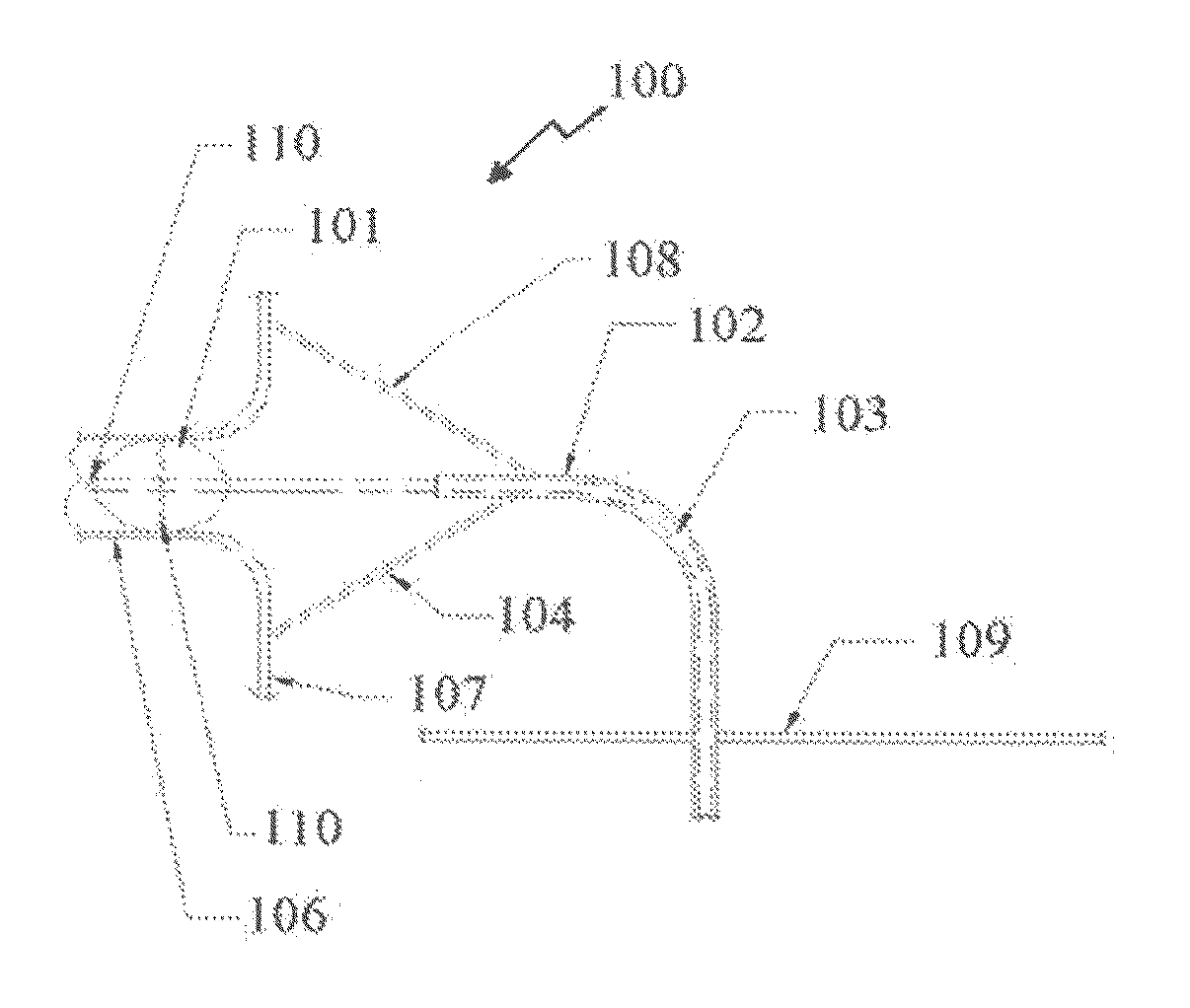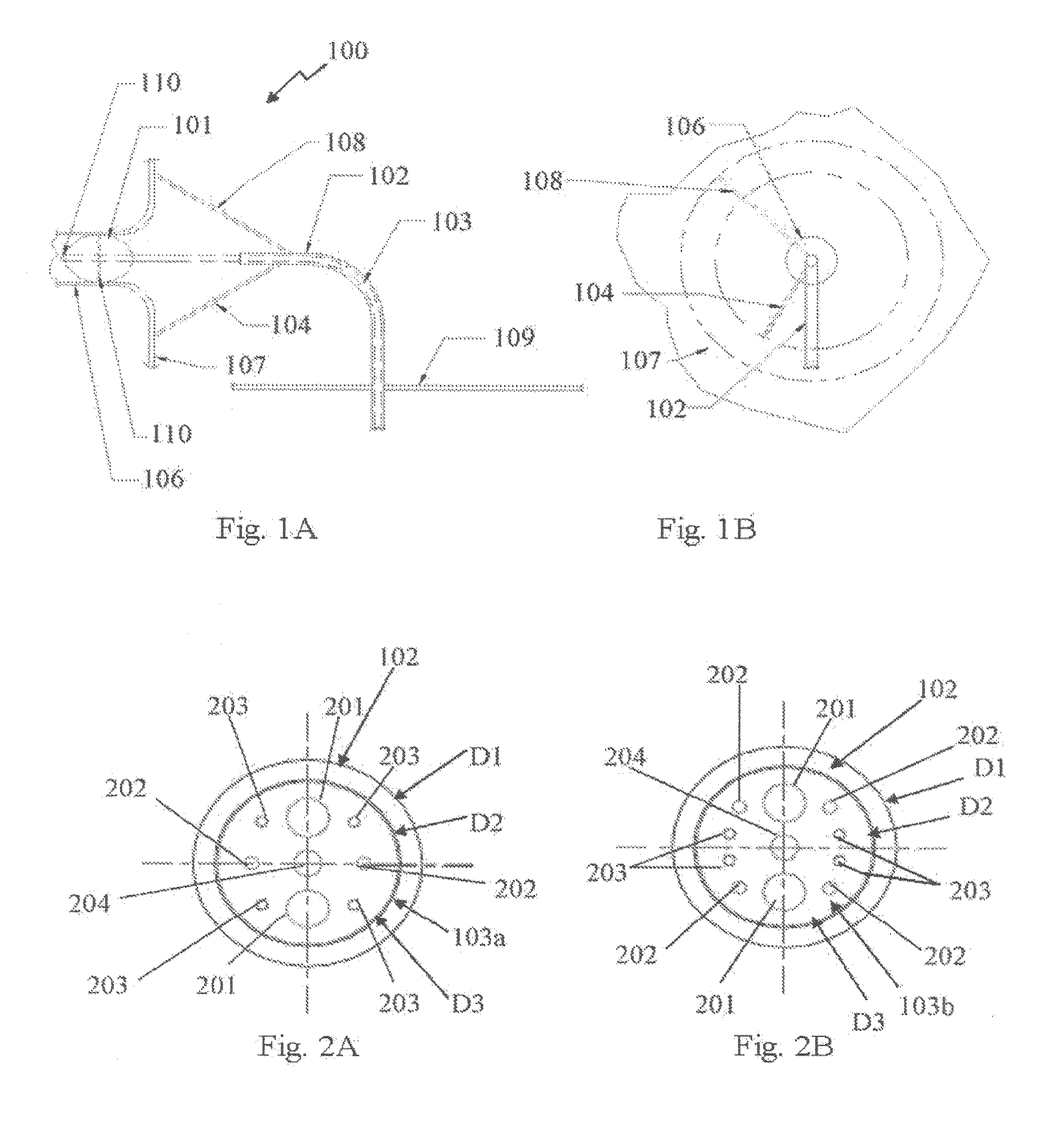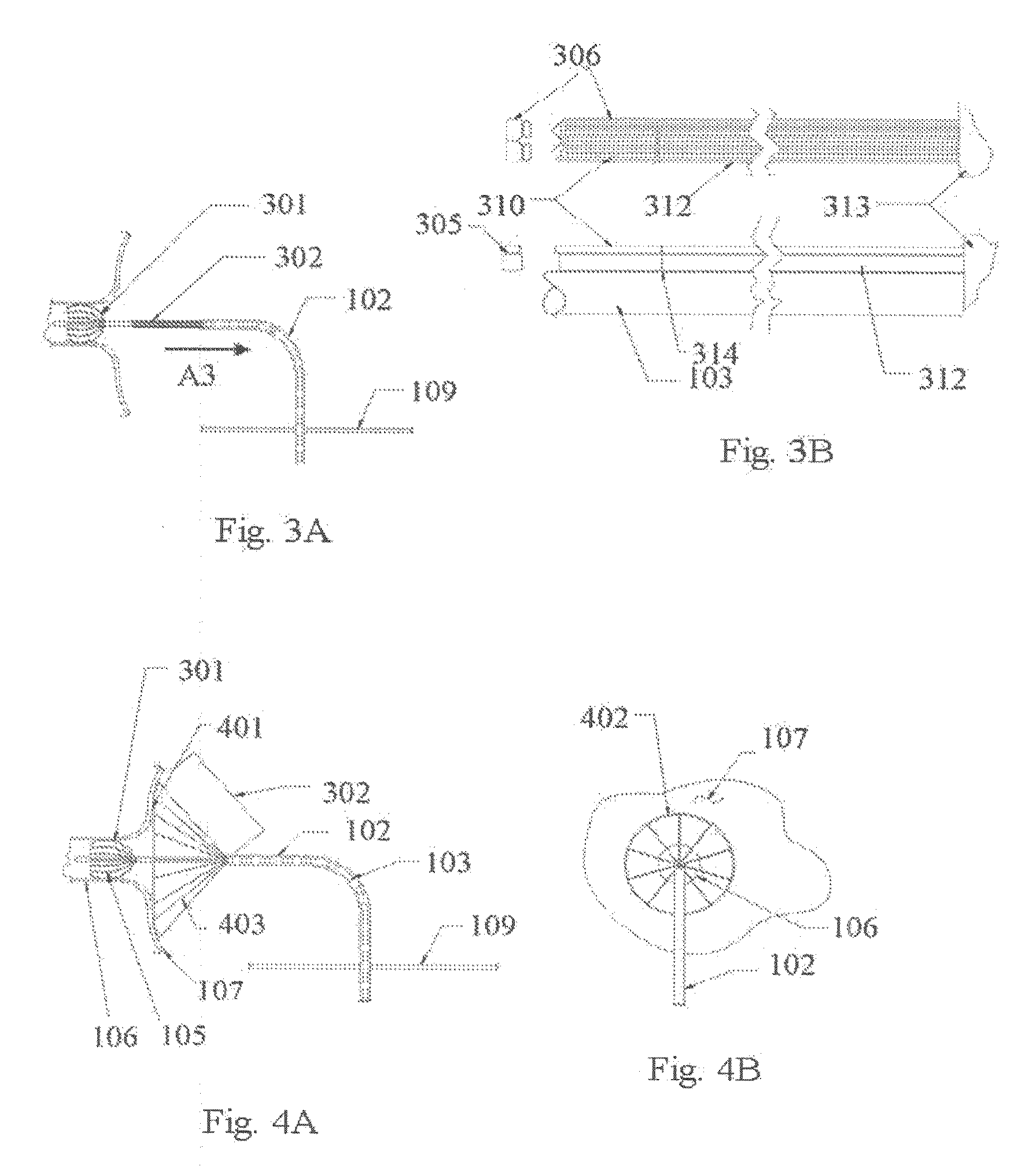Anchored cardiac ablation catheter
a catheter and anchoring technology, applied in the field of anchoring cardiac ablation catheters, can solve the problems of complex ablation techniques, side effects of treatment, and reduced quality of life or present risks
- Summary
- Abstract
- Description
- Claims
- Application Information
AI Technical Summary
Benefits of technology
Problems solved by technology
Method used
Image
Examples
Embodiment Construction
[0056]An apparatus and method for performing cardiac ablation employs a catheter and various anchoring and ablation techniques, according to illustrative embodiments described herein. The various arrangements and types of apparatus components are shown in the illustrative embodiments of FIGS. 1-18.
[0057]A. Catheter Including Balloon Anchor and Compass Ablator
[0058]Reference is now made to FIGS. 1A and 1B showing, respectively, a side and front view of an illustrative embodiment of a cardiac ablation catheter comprising a point or “compass” ablator and balloon anchor. The point ablator is maneuvered circumferentially similar to a compass, thereby this embodiment is referred to as a compass ablator 100 includes a balloon anchor 101 at the distal tip 110 of the catheter 103. An “anchor”, as the term is used generally herein, refers to the structure assembled on a distal end of the catheter for application within the pulmonary vein. The anchor structure expands radially outwardly so as ...
PUM
 Login to View More
Login to View More Abstract
Description
Claims
Application Information
 Login to View More
Login to View More - R&D
- Intellectual Property
- Life Sciences
- Materials
- Tech Scout
- Unparalleled Data Quality
- Higher Quality Content
- 60% Fewer Hallucinations
Browse by: Latest US Patents, China's latest patents, Technical Efficacy Thesaurus, Application Domain, Technology Topic, Popular Technical Reports.
© 2025 PatSnap. All rights reserved.Legal|Privacy policy|Modern Slavery Act Transparency Statement|Sitemap|About US| Contact US: help@patsnap.com



